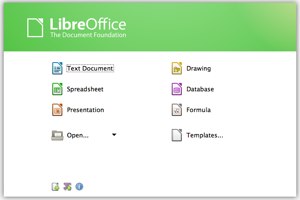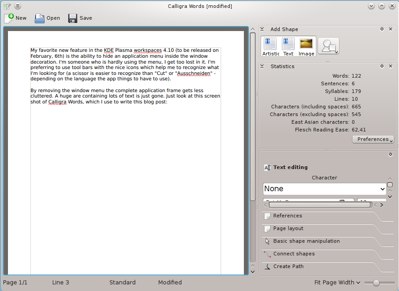If the arrival of Windows 8 opened new doors for Linux in the world of desktop operating systems last fall, then it seems fair to say that the recent arrival of Microsoft Office 2013 and Office 365 has surely done something similar for free and open source office suites.
 After all, much the way Windows 8 imposed a whole new mobile-inspired paradigm on desktop users who weren’t necessarily willing to buy into it, so the newest Office generation has brought big changes in everything from the format to the pricing plan.
After all, much the way Windows 8 imposed a whole new mobile-inspired paradigm on desktop users who weren’t necessarily willing to buy into it, so the newest Office generation has brought big changes in everything from the format to the pricing plan.
So, as the world mulls the significance of President Obama’s recent State of the Union address, there could hardly be a better time to look at the current state of open source office software—particularly given that several of the key players just got big updates.
Read on, then, for some of the highlights of where things stand in the world of free and open Office alternatives.
LibreOffice Graduates to 4.0
Clearly leading the pack of free and open source office suites is LibreOffice, the fork of OpenOffice.org that was created back in 2010. Widely held up as a shining example of FOSS success, LibreOffice has flourished since its founding, steadily gaining stability and performance improvements as well as exciting new features along the way.
Hard on the heels of the software’s second birthday last fall, the Document Foundation recently released version 4.0 to considerable fanfare. The software offers six feature-rich applications and is included by most leading Linux distributions. Particularly notable about this latest release are all the many improvements made to interoperability.
Calligra Moves to 2.6
 Even more recently, the Calligra Suite that grew out of the KDE project’s KOffice in 2010 reached a significant milestone as well with the appearance of version 2.6. With versions for desktop PCs, tablets, and smartphones, this package brings numerous improvements across its eight applications. Surely most noteworthy among them, however, is the addition of Calligra Author targeting both novelists and textbook authors.
Even more recently, the Calligra Suite that grew out of the KDE project’s KOffice in 2010 reached a significant milestone as well with the appearance of version 2.6. With versions for desktop PCs, tablets, and smartphones, this package brings numerous improvements across its eight applications. Surely most noteworthy among them, however, is the addition of Calligra Author targeting both novelists and textbook authors.
Numerous Other Players
While they may not have seen updates as recently, there are also several other key players in the world of open source office software, of course, including also Apache OpenOffice.
Now under the purview of the Apache Software Foundation, it’s this suite that was forked to create LibreOffice, so the two definitely share many similarities. The current version 3.4 of Apache OpenOffice has been downloaded more than 30 million times, the project says.
Also worth mentioning are OxygenOffice Professional—an enhanced version of OpenOffice—and Feng Office Community Edition, a free and open source online project management and collaboration tool. The popular Google Docs, of course, is not open source software.
‘Matching Most of the Functionality’
In any case, there’s no doubt these and other open contenders are increasingly offering a viable alternative to business users.
“The open source office software alternatives still represent a minority of users, but the good news is that conversion to and from other office software suites, particularly Microsoft’s, makes it possible to function in today’s business world with these open source options,” Jay Lyman, a senior analyst with 451 Research, told Linux.com.
“In terms of capabilities and features, the main open source options such as LibreOffice and OpenOffice have also come a long way in this regard, matching most of the functionality provided by their proprietary counterparts, Lyman added.


